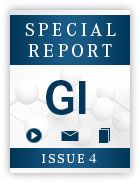KRAS Mutant ctDNA Assay Performance Comparable in Urine and Plasma for Advanced CRC
Comparable test results were shown with both urine and plasma molecular assays in a blinded, retrospective study.
Marek Minarik, PhD
Comparable test results were shown with both urine and plasma molecular assays in a blinded, retrospective study that evaluated the potential of quantitatingKRAScirculating tumor (ct)DNA in patients with minimal residual disease (MRD) surgical colorectal cancer (CRC) who have liver metastases.
A correctKRASmutation was identified in 95% of archival plasma specimens by the assay and in 92% of archival urine specimens from patients with CRC and knownKRASmutational status in tumor tissue, according to data presented at the 2015 Gastrointestinal Cancers Symposium by Marek Minarik, PhD, director at Genomac International and assistant professor at Charles University, Prague, Czech Republic.1
Samples were collected for a collaborative study by Trovagene with Genomac International, Prague, Czech Republic, from 20 patients with stage 4 CRC and aKRAS-positive primary tumor. All 20 patients were undergoing surgical treatment in combination with systemic therapies that included neoadjuvant radio/chemotherapy, adjuvant targeted therapy, and adjuvant chemotherapy.
Archived, matched longitudinal plasma and urine samples were collected and evaluated both prior to surgery to provide a baseline, and at time intervals throughout the course of treatment. Concordance betweenKRASdetection in archived tissue, plasma, and urine samples was established at baseline, and urine and plasmaKRASwas monitored longitudinally.
KRASmutation concordant with tumor tissue was detected in 19 of 20 evaluable baseline plasma samples (95%), while aKRASmutation concordant with tissue was detected in 11 of 12 evaluable baseline urine samples (92%). In a single patient, aKRASmutation was detected consistently across all serial plasma and urine samples, but not in tissue biopsy.
A total of 190 plasma and urine samples that had been archived for 3 to 5 years were tested, with 101 of 101 plasma samples (100%) and 79 of 92 urine samples (86%) having sufficient DNA concentration and deemed evaluable. The degree of DNA degradation in these archival urine samples was elevated compared with typical clinical samples.
The assay (Trovagene, San Diego, CA) uses a selective enrichment step for mutated DNA fragments, while suppressing wild-type sequence PCR amplification with a blocker, followed by deep next-generation sequencing. Post-sequencing analysis algorithms quantitate the amount of mutant DNA in samples. The company says that its assay has a lower limit of detection of 0.0055% and provides single-copy detection, with 7 mutant DNA copies reliably detected in 60 ng of wild-type DNA (over 18,000 genomic copies; LOD = 0.04%) or in 360 ng wild-type DNA (over 100,000 genomic copies; LOD = 0.006%).
In a study using the assay to follow individual cases of patients with metastatic colorectal cancer (mCRC), ctDNAKRASsignal remained detectable or increased after surgery in 10 of 11 patients who had incomplete, palliative surgery. This was contrasted by a study of patients with mCRC who underwent intent-to-cure surgery, whose ctDNAKRASlevels were undetectable after surgery in urine or plasma at all time-points measured in 4 of the 5 patients, and whoseKRASlevels became undetectable in urine or plasma in 5 out of 5 patients at 7 days following surgery. The time course levels ofKRASsignal in urine showed overlap with those in plasma in both the palliative surgery and intent-to-cure surgery groups.
Over half of patients with CRC will develop liver metastases. Surgical resection, in combination with systemic therapies, greatly improves long-term outcomes. About 40% of patients with resected liver-limited disease are alive, 5 years after diagnosis. While tumor staging and surgery are commonly used for prognostic assessment, better noninvasive methods are needed for monitoring response to therapy, following MRD, and guiding complex treatment decisions in these patients.
“We demonstrated the clinical applicability of assessing minimal residual disease after surgery in CRC patients with liver metastases by quantitative monitoring of urinary ctDNAKRASwith single molecule sensitivity,” said Minarik. “The prognostic significance of post surgicalKRASlevels and the overall survival in stage 4 CRC patients with liver metastases is being evaluated in a larger cohort.”
Poole JC, Vibat CR, Benesova L, et al. Highly sensitive quantitative detection of circulating tumor DNA in urine and plasma from advanced colorectal cancer patients in aid of early diagnosis of clinically relevantKRAS

Survivorship Care Promotes Evidence-Based Approaches for Quality of Life and Beyond
March 21st 2025Frank J. Penedo, PhD, explains the challenges of survivorship care for patients with cancer and how he implements programs to support patients’ emotional, physical, and practical needs.
Read More


















